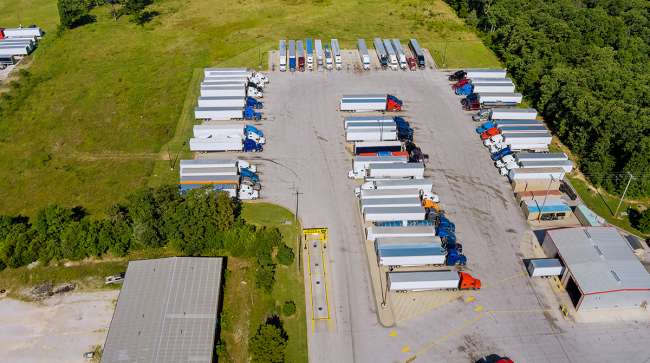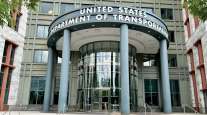Senior Reporter
Appellate Court Strikes Down GHG Rule for Trailers

[Stay on top of transportation news: Get TTNews in your inbox.]
A divided federal appeals court has thrown out portions of the 2016 Phase 2 greenhouse gas emissions rule that would have required heavy- and medium-duty trailers for the first time ever to adopt some combination of fuel-saving technologies.
“In 2016, the Environmental Protection Agency issued a rule for trailers pulled by tractors based on a statute enabling the EPA to regulate motor vehicles,” said the Nov. 12 decision of the three-judge panel in a written opinion by Circuit Judge Justin Walker of the U.S. Court of Appeals for the District of Columbia Circuit. “In that same rule, the National Highway Traffic Safety Administration issued fuel-efficiency standards for trailers based on a statute enabling NHTSA to regulate ‘commercial medium-duty or heavy-duty on-highway vehicles.’ ”
“Trailers, however, have no motor. They are therefore not ‘motor vehicles.’ Nor are they ‘vehicles’ when that term is used in the context of a vehicle’s fuel economy, since motorless vehicles use no fuel.”
The decision came in a petition for the court’s review of the rule requested by the Truck Trailer Manufacturers Association.
“We therefore grant the petition and vacate all portions of the rule that apply to trailers,” Walker wrote.
TTMA v. EPA Appeal by Transport Topics on Scribd
The rule would have required trailer manufacturers to adopt some combination of fuel-saving technologies, such as side skirts and automatic tire pressure systems.
The case has lingered in the appeals court since 2017, when the court granted TTMA’s motion to stay the EPA’s portion of the rule to the extent it applies to trailers. The rule was set to take effect Jan. 1, 2021. In 2020, the court stayed the compliance dates for NHTSA’s portion of the requirement.
In an effort to speed up a decision, in December 2019 the three-judge panel lifted the stay of TTMA’s lawsuit seeking to block the regulatory mandate. The association claimed that case had been languishing despite promises by the EPA and NHTSA to review the Obama-era rule, and that the agencies had made “no discernible progress” with “no progress in sight” toward tweaking, repealing or leaving in place the joint rule.
Last year, the Department of Justice filed a legal document with the appellate court supporting federal regulators’ authority to enforce the greenhouse gas emissions rule to include the first-ever federal regulation of greenhouse gases and fuel efficiency for trailers.
Government attorneys said EPA acted under the Clean Air Act, which authorizes the agency to regulate emissions of air pollutants from “new motor vehicles.”
“Because the trailers are tractor-propelled rather than self-propelled, I agree with the majority opinion’s judgment that the Clean Air Act’s text precludes the particular EPA regulations at issue here,” wrote Circuit Judge Patricia Millett. “I further agree with the majority opinion that, in seeking to reduce emissions, the EPA could instead regulate the tractors, including the types of trailers they are allowed to pull.”
However Millett parted ways with the majority opinion, claiming NHTSA acted under a provision of the Energy Independence and Security Act of 2007.
“When it comes to the question of NHTSA’s authority to issue its separate fuel-economy regulations, I part ways with the majority opinion,” Millett wrote. “NHTSA acted under a provision of the Energy Independence and Security Act of 2007 that directed NHTSA to establish fuel-efficiency standards for commercial medium- and heavy-duty ‘on-highway vehicles.’ ”

Kedzie
“Unlike the Clean Air Act, the Energy Independence Act contains no definition of the term ‘vehicle’ other than regulating it in its on-highway operation and status,” she continued.
“With the D.C. Circuit Court’s opinion being long overdue, the trucking industry has already been voluntarily adopting the very same trailer technologies mandated under the Phase 2 rule because there is a proven business case for trucking companies to invest in improved trailer aerodynamics and low rolling resistance tires,” said Glen Kedzie, energy and environmental affairs counsel at American Trucking Associations.
Kedzie added, “I would expect that the carbon and fuel savings expected under the original Phase 2 trailer requirements will more or less be achieved organically as fleets continue to focus on bettering the overall efficiency of the tractor-trailer as one combined unit. Trailer-efficiency improvements will become even more critical as we see the advancement of battery-electric vehicles and the need to expand battery range by reducing drag and tire and rolling resistance.”
Want more news? Listen to today's daily briefing below or go here for more info:




